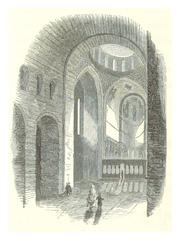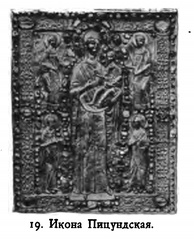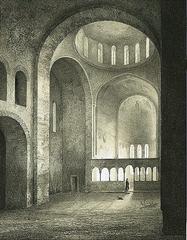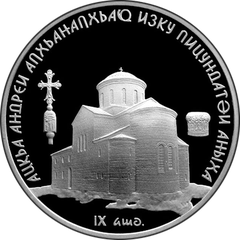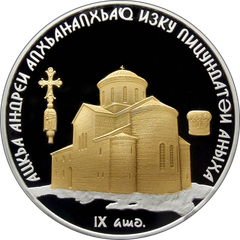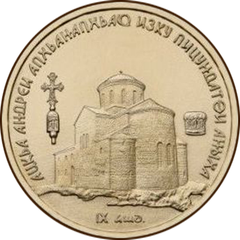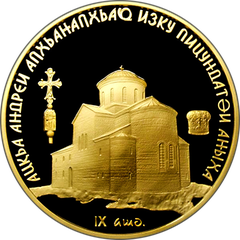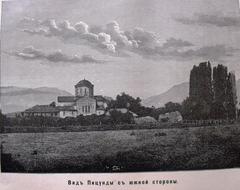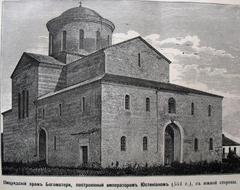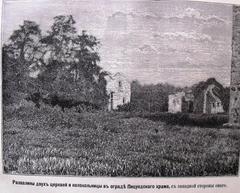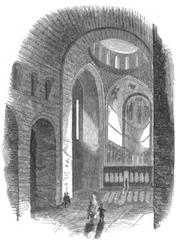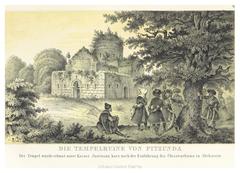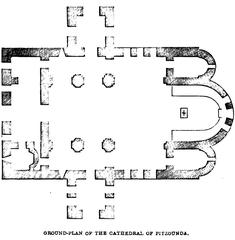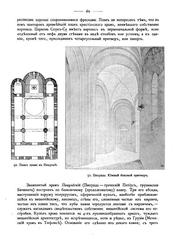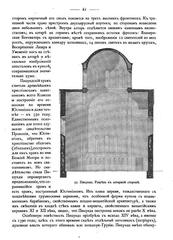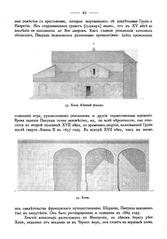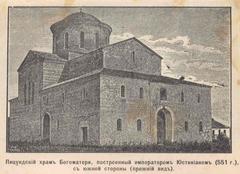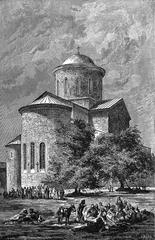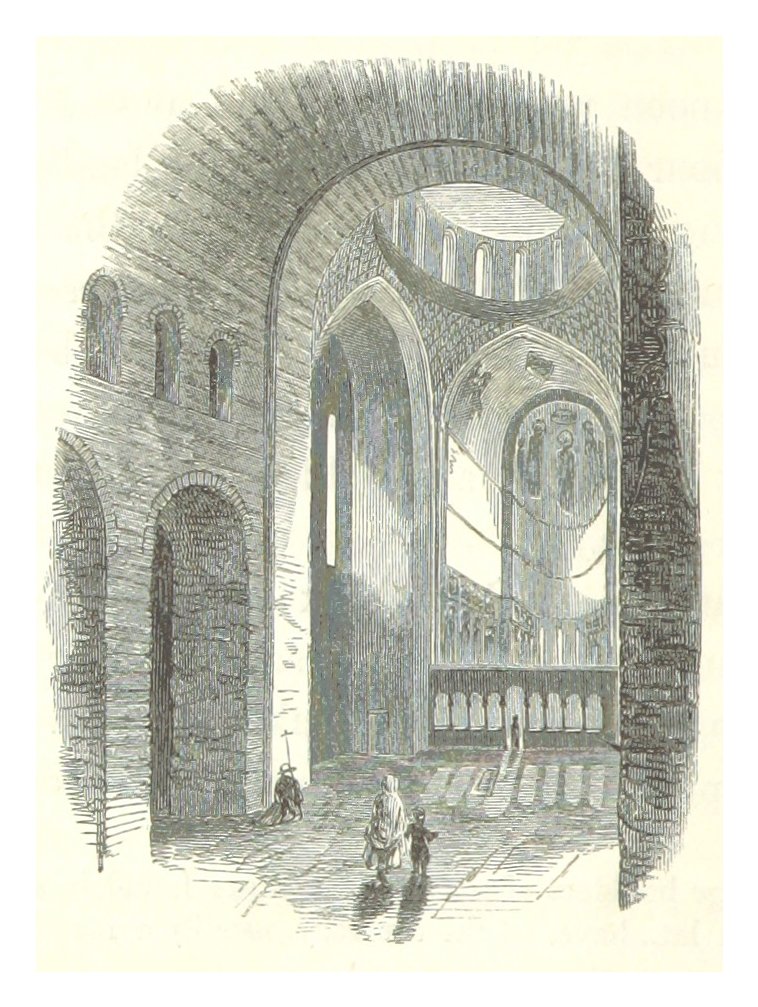
Pitsunda Cathedral: Visiting Hours, Tickets, and Historical Significance in Gagra, Georgia
Date: 15/06/2025
Introduction: The Legacy of Pitsunda Cathedral
Situated on the northeastern coast of the Black Sea, the Pitsunda Cathedral in Gagra, Abkhazia, Georgia, stands as a powerful monument to the region’s layered history, religious traditions, and architectural brilliance. Also known as the Cathedral of St. Andrew the Apostle or Bichvinta Cathedral, this landmark, built in the late 10th century, is celebrated for its striking Byzantine-Georgian architecture, vibrant frescoes, and enduring spiritual significance. Over centuries, Pitsunda has been shaped by Greek, Roman, Byzantine, and Georgian influences, making the cathedral an essential destination for history lovers, cultural explorers, and religious pilgrims alike (jatland.com; AbkhazWorld PDF; SpottingHistory; Sandee).
Today, Pitsunda Cathedral welcomes visitors daily, free of charge, offering guided tours, access to nearby cultural attractions, and opportunities to experience local traditions and events. This comprehensive guide provides essential information on visiting hours, ticketing, historical and architectural context, etiquette, travel tips, and nearby attractions, ensuring a memorable and respectful exploration of this remarkable site.
Table of Contents
- Introduction
- Historical Overview
- Architectural Highlights
- Religious and Cultural Significance
- Visitor Information (Hours, Tickets, Tours)
- Getting There and Accessibility
- Dress Code and Etiquette
- Nearby Attractions
- Guided Tours and Events
- Practical Tips for Visitors
- Frequently Asked Questions (FAQ)
- Conclusion
- Sources
Historical Overview
Ancient Roots and Early Christian Era
Pitsunda, originally known as Pityus, was founded by Greek colonists in the 5th century BCE and flourished as a vital Black Sea trading and military center. Under Roman and Byzantine rule, it became a fortified city and a critical early Christian hub, with tradition linking the region to the ministries of St. Andrew and St. Simon the Zealot. By the 4th–5th centuries CE, the area had established one of the earliest bishoprics in the Caucasus, as evidenced by the participation of Bishop Stratophil of Pitiunt in the First Ecumenical Council of Nicaea in 325 CE (AbkhazWorld PDF; historygreek.org).
Medieval Flourishing and Cathedral Construction
In the medieval period, Pitsunda (Bichvinta) rose to new prominence. Under King Bagrat III of Georgia, the Pitsunda Cathedral was constructed in the late 10th century as a religious and administrative center for western Georgia and the Caucasus. The cathedral became the seat of the Georgian Orthodox Catholicate of Abkhazia, and its importance was reinforced by a separate patriarchate in 1390, overseeing large swathes of western Georgia (jatland.com; AbkhazWorld PDF).
Later History, Decline, and Revival
Following the Ottoman conquest in the 16th century, the cathedral’s religious role diminished, though its architectural and cultural value endured. Russian annexation in the 19th century brought renewed interest, and during the Soviet era, Pitsunda became a resort town and a site for political retreats. The cathedral was reconsecrated in 1869 and has since undergone several restoration efforts to preserve its structure and artistic heritage (jatland.com).
Architectural Highlights
Cross-in-Square Structure and Dome
Pitsunda Cathedral is a prime example of medieval Georgian ecclesiastical architecture, featuring a cross-in-square plan with a commanding central dome rising 29 meters above the ground. The cathedral measures approximately 37 by 25 meters, with robust walls constructed from alternating rows of stone and brick—a technique blending local tradition with Byzantine influence (SpottingHistory; Wikipedia).
Frescoes, Mosaics, and Artistic Treasures
Inside, visitors encounter three naves, separated by massive columns and culminating in three semicircular apses. The walls are adorned with remnants of 13th- and 16th-century frescoes, depicting biblical scenes and saints, and a 12th-century Georgian manuscript of the Four Gospels was discovered here. These features reflect the cathedral’s significance as both a religious and artistic center (SpottingHistory).
Pipe Organ and Acoustics
A unique feature is the pipe organ, installed in 1975 by the Alexander Schuke factory of Germany. This addition, rare for Orthodox churches, takes advantage of the building’s exceptional acoustics and hosts regular concerts and liturgical events (Wikipedia).
Conservation and Restoration
Over the centuries, the cathedral has survived periods of neglect and political turmoil. Restoration efforts have focused on structural stabilization and the preservation of frescoes and mosaics, ensuring the monument’s survival for future generations (Wikipedia).
Religious and Cultural Significance
Pitsunda Cathedral has long served as a spiritual heart for western Georgia and the wider Caucasus, blending Orthodox Christian traditions with local customs. The cathedral and its grounds have also been sites for communal gatherings, political expression, and cultural festivals, particularly during Orthodox holidays. Its recognition as a UNESCO World Heritage site underscores its global importance (AbkhazWorld PDF; Sandee).
Visitor Information
Opening Hours and Admission
- Open: Daily, 09:00–18:00.
- Admission: Free, with donations welcomed for maintenance and restoration (RestGeo).
Guided Tours
- Guided tours are available through local operators and visitor centers.
- Advance booking is recommended for group or in-depth tours, especially during peak seasons or religious festivals.
Accessibility
- Cathedral grounds are generally wheelchair accessible, though some areas may have uneven paving or steps. Visitors with mobility challenges should inquire in advance.
Getting There and Travel Tips
Transportation
- By Car: The nearest major Georgian city is Kutaisi (216 km away). Car rental is available; the drive takes 4–5 hours, depending on border conditions (Kayak Pitsunda Guide).
- Public Transport: Marshrutkas and buses operate to the Abkhazian border; onward travel requires special permits.
- Entry Requirements: Entry to Abkhazia requires special documentation. Check current travel advisories and border policies before travel (Wander-Lush Georgia Travel Tips).
Dress Code and Visitor Etiquette
- Men: Long trousers and sleeved shirts.
- Women: Shoulders and knees covered; headscarves recommended.
- Modest, respectful attire is required. Wrap-around skirts and scarves are sometimes available at the entrance, but bringing your own is advisable (Wander-Lush Dress Code).
- Photography is permitted outdoors and, usually, inside, though flash is discouraged. Restrictions may apply during services.
Exploring the Cathedral Complex and Nearby Attractions
- Pitsunda Beach: Sandy beaches and clear Black Sea waters are minutes away (Sandee).
- Archaeological Museum: Exhibits artifacts from ancient Pityus.
- Nature Trails: Scenic walking routes along the coast.
- Local Cafés and Shops: Sample local cuisine and purchase souvenirs.
Guided Tours, Events, and Cultural Activities
- Local guides offer in-depth historical and cultural tours.
- The cathedral hosts special liturgical services and occasional concerts, particularly featuring its renowned pipe organ.
- Community festivals and Orthodox celebrations provide unique cultural experiences.
Practical Tips for a Memorable Visit
- Check opening hours and service schedules before your visit.
- Dress conservatively and respect all posted rules.
- Avoid flash photography inside and ask permission before photographing sacred rituals.
- Learn a few basic phrases in Georgian or Russian for easier communication.
- Plan to combine your visit with nearby natural or historical attractions for a fuller experience (Wander-Lush Monastery Tips).
Frequently Asked Questions (FAQ)
Q: What are the visiting hours of Pitsunda Cathedral?
A: The cathedral is open daily, 09:00–18:00, but hours may vary during special events or religious holidays.
Q: Is there an entrance fee?
A: No, entry is free; donations are appreciated.
Q: Are guided tours available?
A: Yes, through local tour operators and visitor centers; advance booking is advised for groups.
Q: Is the site accessible for wheelchairs?
A: The grounds are generally accessible, but some areas may present challenges. Contact ahead for assistance.
Q: Can I take photographs inside?
A: Photography is allowed, but flash is discouraged. Restrictions may apply during services.
Conclusion
Pitsunda Cathedral remains a vibrant symbol of Abkhazia’s religious devotion, cultural identity, and architectural mastery. Its centuries-old walls invite travelers to explore a living history, from ancient Greek settlements to medieval Georgian grandeur and modern revival. With free daily access, supportive guided tours, and a host of nearby attractions, the cathedral is a highlight of any journey through the Caucasus. Respect local customs, plan your visit thoughtfully, and immerse yourself in the unique heritage of this remarkable monument.
Sources and Further Information
- jatland.com
- AbkhazWorld PDF
- SpottingHistory
- Wander-Lush Georgia Travel Tips
- Sandee
- Kayak Pitsunda Guide
- Wikipedia
- RestGeo
- historygreek.org
- Discover Abkhazia
